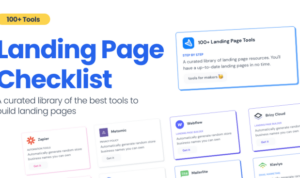Developing Content for User Experience sets the stage for creating captivating online experiences that keep users hooked from start to finish. Dive into the world of user-centric content creation and discover the secrets to boosting engagement like never before.
Understanding the essence of user experience, tailoring content to specific audiences, and optimizing for maximum engagement are just the beginning of this exciting journey.
Understanding User Experience in Content Development

User experience plays a critical role in content creation as it directly impacts how users interact with a website. The overall design, layout, and usability of a website can either attract or deter users, affecting engagement levels significantly.
Importance of User Experience
When developing content, it is crucial to consider the user experience to ensure that visitors have a positive interaction with the website. This involves creating a seamless and intuitive navigation system, optimizing page loading speed, and ensuring that the content is relevant and engaging.
- Intuitive Navigation: Users should be able to easily find the information they are looking for without getting lost in a maze of links and pages.
- Page Loading Speed: Slow loading times can frustrate users and lead to high bounce rates. Optimizing speed is essential for retaining visitors.
- Relevant and Engaging Content: Content should be tailored to meet the needs and interests of the target audience, keeping them engaged and coming back for more.
Impact on Website Engagement
A well-thought-out user experience can significantly increase website engagement by keeping users on the site longer, reducing bounce rates, and encouraging interaction with the content. By creating a user-friendly environment, visitors are more likely to explore different sections of the website and take desired actions.
- Increased Time Spent on Site: A positive user experience can lead to longer browsing sessions, allowing users to consume more content and potentially convert.
- Reduced Bounce Rates: When users have a seamless experience navigating the site, they are less likely to leave immediately, reducing bounce rates.
- Higher Interaction Levels: Engaging content and intuitive design can prompt users to interact with the site through likes, shares, comments, and other forms of engagement.
Key Elements of User Experience
Several key elements contribute to a positive user experience, including responsive design, clear call-to-actions, mobile optimization, and accessible content.
- Responsive Design: Ensuring that the website is accessible and functional across various devices, including smartphones, tablets, and desktops.
- Clear Call-to-Actions: Providing clear and compelling prompts for users to take specific actions, such as signing up for a newsletter or making a purchase.
- Mobile Optimization: With the increasing use of mobile devices, optimizing the website for mobile users is essential for a seamless experience.
- Accessible Content: Making sure that the content is easily readable, with proper headings, alt text for images, and other accessibility features.
Creating User-Centered Content: Developing Content For User Experience
When it comes to creating user-centered content, it’s essential to prioritize the needs and preferences of the user. By focusing on delivering valuable and relevant information, you can enhance the overall user experience.
The Role of User Personas, Developing Content for User Experience
User personas play a crucial role in tailoring content for specific audiences. These fictional representations of your target users help you understand their goals, motivations, and pain points. By creating user personas, you can personalize content to meet the needs of different user segments.
Using User Research for Content Development
User research is key to informing content development for a better user experience. By conducting surveys, interviews, and usability tests, you can gain valuable insights into user behavior and preferences. This data can help you create content that resonates with your audience and addresses their needs effectively.
Designing Content for Accessibility
In today’s digital age, it is crucial to ensure that all users, regardless of their abilities, can access and interact with online content. Designing content for accessibility not only helps users with disabilities but also improves the overall user experience for everyone. By implementing accessible features, you can make your content more inclusive and user-friendly.
Significance of Creating Accessible Content
Creating accessible content is essential to ensure that all users, including those with disabilities, can navigate and understand the information on your website or platform. By making your content accessible, you are breaking down barriers and providing equal opportunities for individuals with different needs to engage with your content.
- Using alternative text for images: Providing descriptive alt text for images allows visually impaired users to understand the content of the images through screen readers.
- Proper heading structure: Organizing content with clear headings helps users navigate through the page easily, especially for users using screen readers.
- Color contrast: Ensuring sufficient color contrast between text and background improves readability for users with visual impairments.
- Keyboard navigation: Designing content that can be easily navigated using a keyboard benefits users who cannot use a mouse.
Best Practices for Designing Accessible Content
- Use descriptive and concise headings to structure content.
- Provide text alternatives for non-text content like images and videos.
- Ensure color combinations meet accessibility standards for readability.
- Test your content with accessibility tools to identify and fix any issues.
Optimizing Content for User Engagement

To optimize content for increased user engagement, it is essential to incorporate interactive elements that enhance the overall user experience. Interactive elements such as videos, infographics, and interactive tools not only capture the user’s attention but also encourage active participation, leading to higher levels of engagement and interaction.
Importance of Interactive Elements
Interactive elements play a crucial role in keeping users engaged and interested in the content. By incorporating features that allow users to interact with the content, such as clickable buttons, interactive graphics, or multimedia elements, you create a more immersive and personalized experience for the user. This not only increases the time spent on the page but also encourages users to explore further, ultimately leading to a more positive user experience.
- Include interactive elements that encourage user participation and engagement.
- Create clickable areas or buttons to allow users to interact with the content.
- Use multimedia elements such as videos, animations, or interactive visuals to enhance the user experience.
- Personalize the content to make it more relevant and engaging for the user.
Creating Engaging Content Formats
When creating engaging content formats such as videos, infographics, or interactive tools, it is important to consider the preferences and interests of your target audience. Tailoring the content to meet the needs of your users will not only increase engagement but also ensure that the content resonates with your audience on a deeper level.
- Utilize videos to convey information in a visually engaging and dynamic way.
- Create infographics to present data and statistics in a visually appealing format.
- Develop interactive tools that allow users to interact with the content and personalize their experience.
- Experiment with different formats to see what resonates best with your audience and adjust accordingly.












